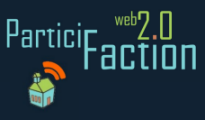Thanks to Will Richardson for sharing these Dion Hinchcliffe Web 2.0 diagrams. Many are tech-heavy, but some are accessible to those of us who don't know our RSS from our Atom (whatever that means).
In browsing these images, I found one that, for me, clicked in terms of why I think that Web 2.0 is so important to learning. It was not the diagram per se, but the two simple words it used: push and pull.
Until now, most systems of education have been "push-o-centric." Schools directly push specific information out to students; teachers are the pushers. Even the students who show up in the library to "pull" information out of books have been pushed to do so. It makes sense that this is the way it has been till now: if the indication of how educated one is rests with one's achievement in a top-down system, then people will willingly (though also, perhaps, grudgingly) get pushed. The very fact that we call it "educating" (what gets done to students) more often than "learning" (what students do) is telling.
This model of one-way pushing is being directly challenged by the culture of Web 2.0. Web 2.0 is largely a "share/pull" model: if I have something to share, I send it out into the Web, with all the tags and metadata required to make it discoverable to those who may want it. Likewise, if I want to learn something, I pull that information to myself via my learning network.
I'm not sure if anyone ever liked sitting through live lectures to receive what was pushed, but if, as is the case in our current Web 2.0 world, you can pretty much pull what you need to yourself whenever you want, then we need to re-think what we call education (or more significantly, what we call learning) in a structured "education system."
Wednesday, May 13, 2009
Subscribe to:
Post Comments (Atom)




No comments:
Post a Comment